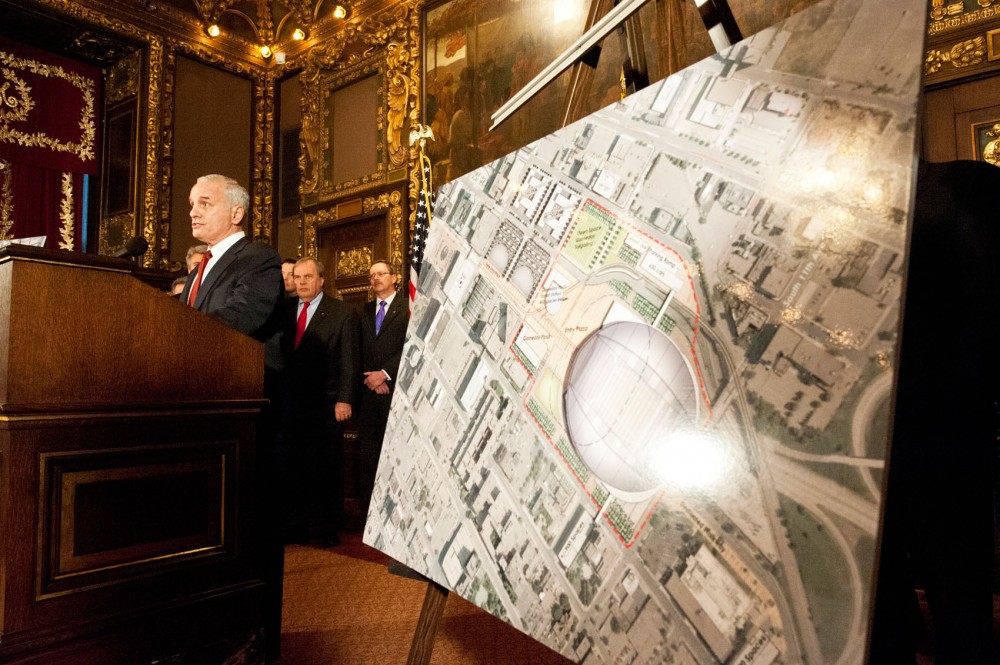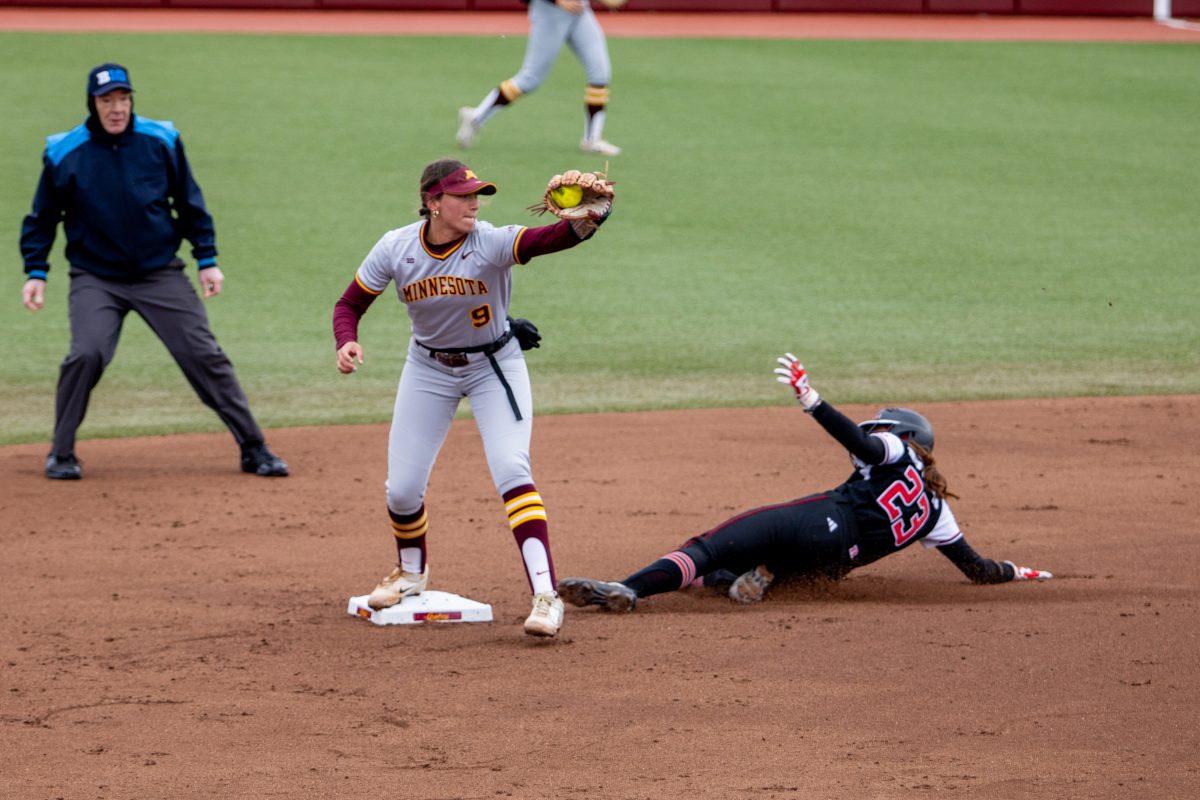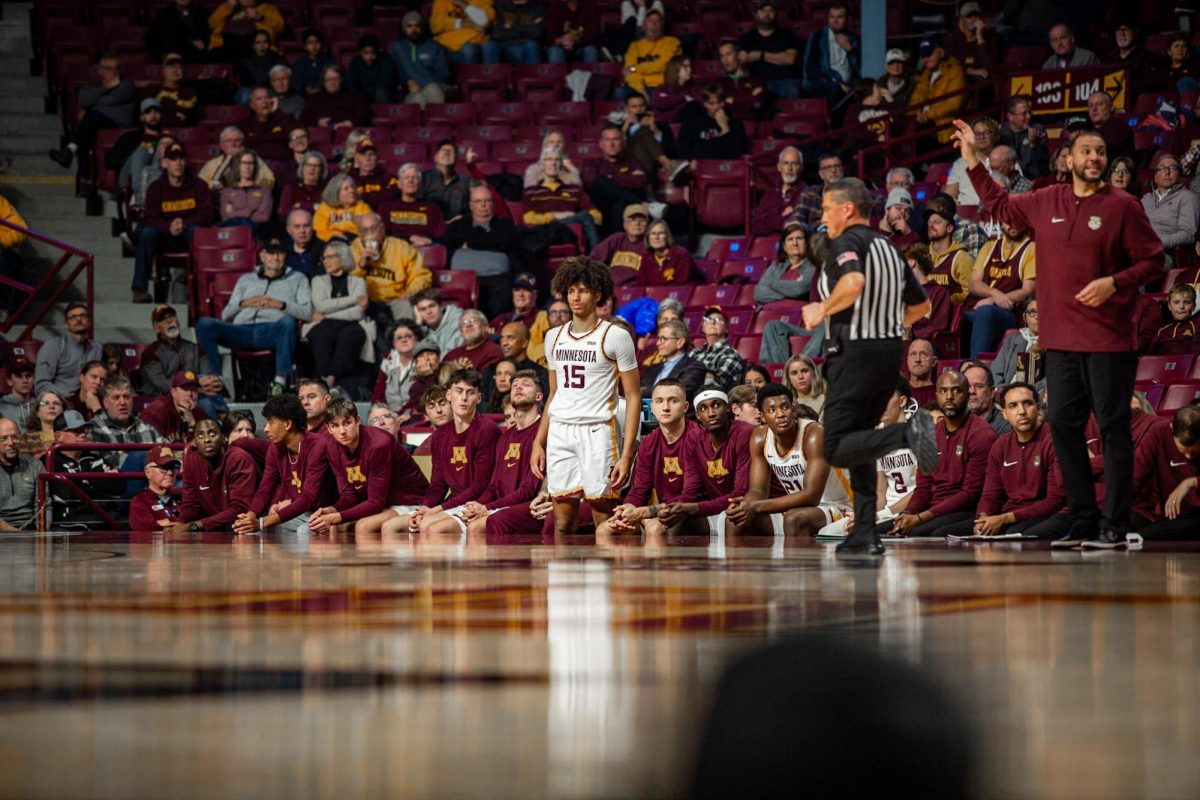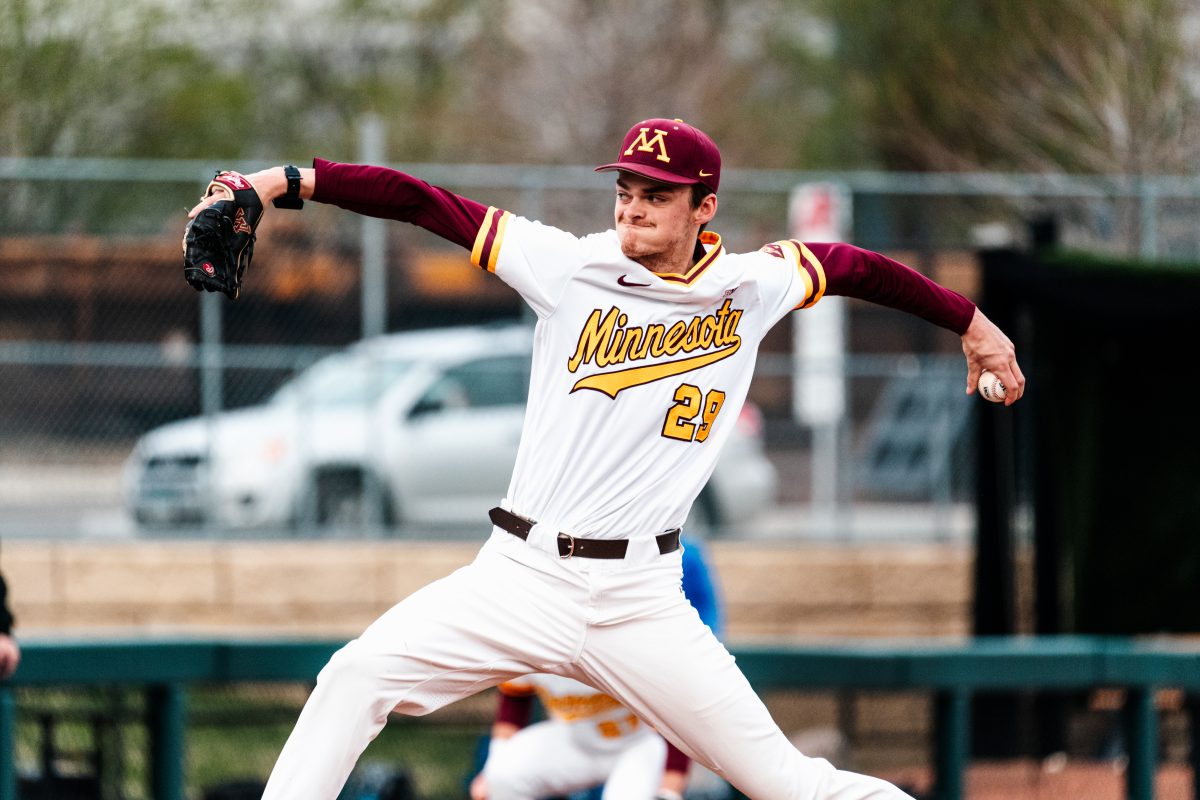Stadium negotiators announced a deal Thursday to build a new Vikings stadium near the current Metrodome site in downtown Minneapolis.
The deal is only the first step before a shovel can go in the ground. The state Legislature and the Minneapolis City Council will still have to sign off, which could be a significant hurdle.
Under the proposal, the state would pay $398 million, the city would pay $150 million and the Vikings would add $427 million in upfront costs for the $975 million stadium. The city would also have to contribute $6 million in annual operating expenses and $1.5 million for capital improvements.
The stadium would open for the 2016 season and the Vikings would be required to play 30 years there.
The stadium would be built almost right on top of the Metrodome site but would allow the Vikings to continue playing there while the east end of the new stadium is built. Still, that means some games will need to be played at the University of Minnesota’s TCF Bank Stadium.
University officials declined to comment because a deal between the Vikings and the University has not been officially reached.
The financing details of an agreement to play at TCF Bank Stadium have also not come to light. The Vikings paid the University $1.7 million to play one game there in 2010.
Ted Mondale, Gov. Mark Dayton’s point man on the stadium negotiations, told reporters Thursday that the goal is to only have the team stay at TCF Bank Stadium for one season. However, it could be less than a year, depending on where the exact site for the new stadium is located.
“The further we can push back the [new] stadium, the less time we have to play at TCF,” Mondale said Thursday on ESPN1500 radio. “If we could push it all the way back and site it over that substation back there, then we [could] probably get away with only half a year at TCF. Which would be great because then you wouldn’t have to put all that capital into TCF for a full year or two years.”
The current proposed site for the new, fixed-roof stadium is located on the southeast end of the Metrodome’s lot, but it remains possible the site will be pushed farther southeast across 11th Avenue South in downtown Minneapolis.
“That’ll be something we look at initially to see if it is feasible,” Mondale said. “But when you start pushing buildings over streets, sometimes things come up in the engineering and you just can’t do it.”
A deal between the Vikings and the University won’t be announced until a bill is passed — if it is passed at all — and the engineering questions are answered, Vikings spokesman Jeff Anderson wrote in an email.
Effect on neighborhoods
With this proposal, the Vikings are expected to open their new stadium for the 2016 season —meaning TCF and the University would likely host the Vikings at least part of the 2015 season.
“That would be beautiful,” said Nancy Pribyl, president of the Stadium Village Commercial Association. “[2015] would be right after the light-rail construction would be out of here. What better testing ground for getting people in and out [on the light rail] than that?”
A business area decimated by long-term construction, Stadium Village and the University’s surrounding neighborhoods would have to acclimate to the additional traffic and commerce.
“The biggest concern is going to be traffic flow in general,” Pribyl said. “Things are different than when you are in an isolated venue that’s in a commercial district. We’re commercial [in Stadium Village], but we also provide a lot of housing.”
The concerns of nearby neighborhoods led to the creation of a mitigation fund in the lead up to the opening of TCF Bank Stadium in 2009. The fund is used to relieve any effects for the six home games the Gophers play each year.
The University District Alliance will meet Wednesday to discuss the Vikings new stadium deal and expect to receive updates from the University on their negotiations with the franchise, Ted Tucker, chairman of the alliance, said Thursday.
“Having any amount of NFL games at TCF will be a stress on the neighborhoods,” Tucker told the Minnesota Daily in February.
In response to a tentative agreement last month between the Vikings and the University, the UDA suggested that $1 be added to the mitigation fund for every Vikings ticket sold at TCF Bank Stadium. The current fund for Gopher games is $1.5 million.
City council opposition
A majority of Minneapolis City Council members have voiced opposition to a stadium plan. But Mayor R.T. Rybak brushed those reports aside, stating that council members didn’t have the full details of the deal when announcing opposition.
The stadium deal calls for companion legislation to be passed that would give Minneapolis greater control over sales taxes in the city, allowing it to renovate the aging Target Center.
Without that legislation, the stadium deal will be an impossible sell to the council, said Ward 2 Councilman Cam Gordon.
Some city council members, including Gordon, are calling for a city-wide referendum on the stadium plan. They point to a city charter provision that calls for a referendum on $10 million or more in city funding for a sports facility.
But Rybak said because the sales tax that Minneapolis would be contributing is under state control, that provision doesn’t apply to this plan, City attorney Susan Segal concurred.
Based on her reading of the proposal, “the taxes would be outside the control of the city and our charter provisions,” she wrote in a statement.
The state’s contribution would not come from general fund dollars, which Dayton emphasized multiple times. Instead, expanded charitable gaming with the addition of electronic pulltabs — essentially portable slot machines that patrons load money on — at more than 2,500 bars and restaurants across the state would make up the state’s portion.
Stadium bill author Rep. Morrie Lanning, R-Moorhead, expressed optimism that a deal could be passed by the Legislature.
Dayton called on the Legislature to pass the bill this session, which is expected to conclude in late April.























